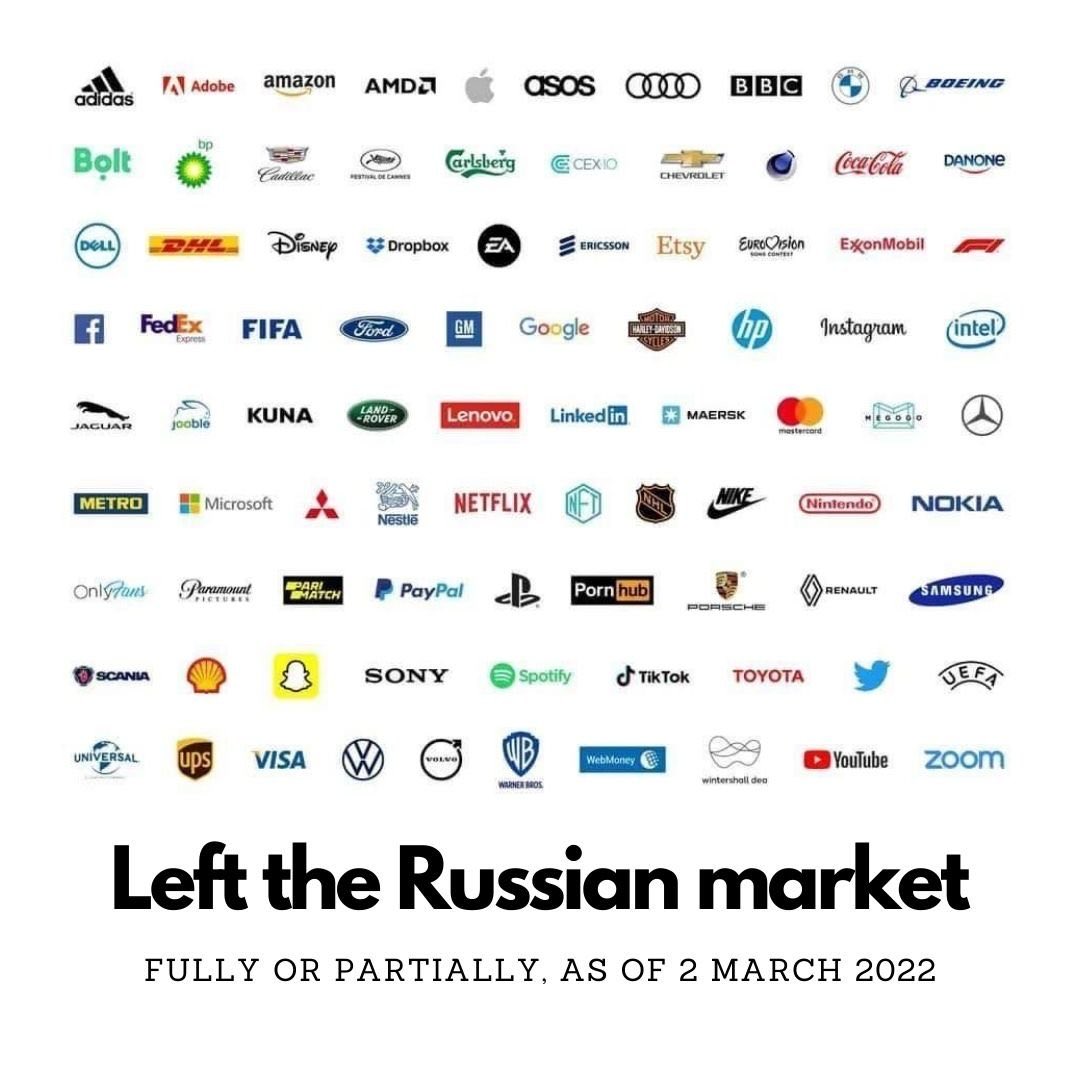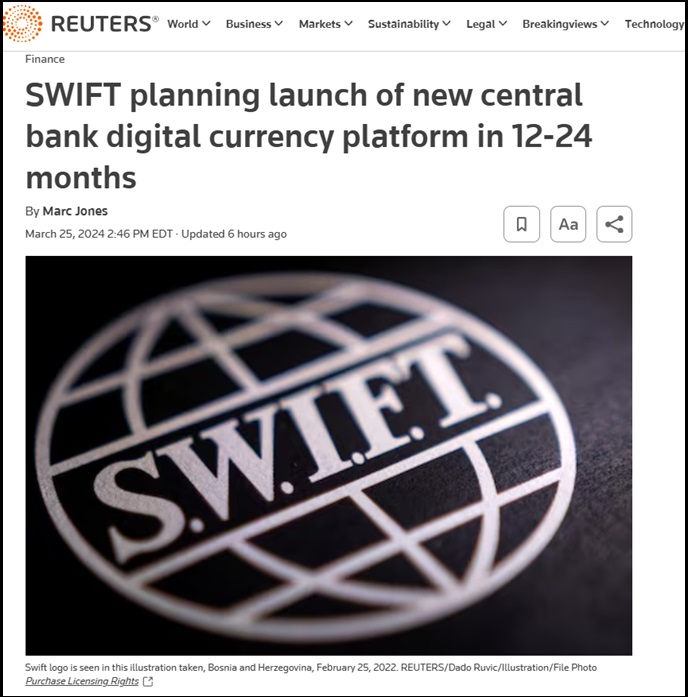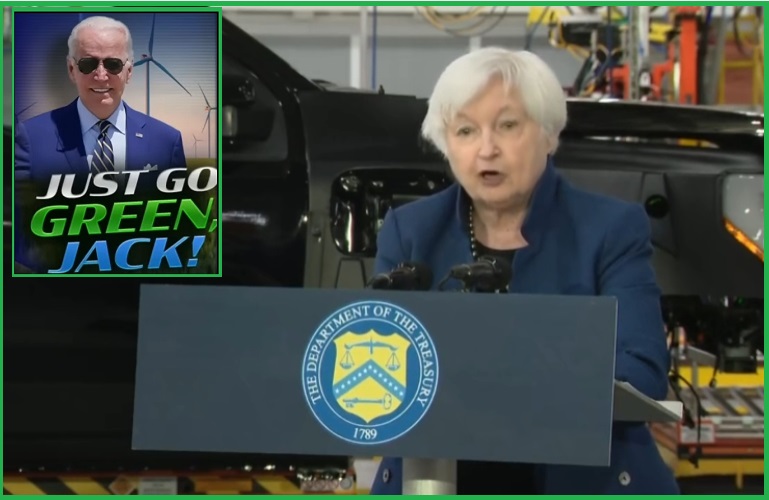The United States Digital Dollar
I never expected to travel the world of a dollar-based central bank digital currency implementation. Two years ago, I was surprised by the construct of the Western sanctions against Russia; however, my curiosity was driven more by the outcome of the intended economic isolation, and not necessarily about the granular construct of the sanctions themselves.
What surprised me initially, was the conversation that never took place in the financial sector. For the first time in history the U.S Dollar was being used as a weapon, not only against Russia, but against any Western corporation who did not comply with the demands of the U.S government. I began highlighting the issue MARCH 5, 2022.
The sanctions against Russia were unlike any set of sanctions that came before. The financial sanctions against Iran, Cuba, North Korea and Venezuela all stood as examples of prior economic sanction constructs, but the financial sanctions against Russia were different. The SWIFT exchange was shut down, Western trade into Russia was halted, and private Western corporations were forced to divest themselves of assets held within Russia.
Under the guise of “economically isolating Russia”, the sanction regime was driven by the U.S. Treasury, U.S. State Dept., and fully supported by Western allies in Europe, Canada, Japan, Australia and New Zealand. Each of the aforementioned nations followed the exact same path.
Given the history of the prior decade,where Russia enlarged its footprint of influence, the sanction regime just did not make sense. It was obvious that non-Western nations would continue trading with Russia, and most of those same non-Western nations were trading with the USA. My simple question was, “won’t alternate countries just step in to fill the void of trade eliminated by the sanctions?”
If, for example, India is still buying widgets from the Western zone, wouldn’t an enterprising Indian company just start buying extra widgets from the USA, Canada or Europe and then begin brokering a portion of those products into Russia? It seemed like common sense, and indeed that type of exchange is exactly what happened.
On the ground, in Russia, there are now Western stores missing, but the Western products are still available under different Russian flagship names. Starbucks closed, and now as you can see from above, it’s Stars Coffee. Same coffee, tables, chairs, cups, and even employees, just a different name. Starbucks, and every other Western company was forced to divest, sell assets at fire sale prices, and exit the market.
All the following companies did the same.
 Despite all the parent companies leaving, their retail products are still available through a system of brokered buying and distribution. Third-party companies simply stepped in to fill the void. You can still buy the newest Samsung TVs and Apple iPhones in Russia, but now they come with a slightly higher price, as the broker adds their markup.
Despite all the parent companies leaving, their retail products are still available through a system of brokered buying and distribution. Third-party companies simply stepped in to fill the void. You can still buy the newest Samsung TVs and Apple iPhones in Russia, but now they come with a slightly higher price, as the broker adds their markup.
On the financial side, the inability to work in dollars or Euros was initially a problem, but workarounds were fast to surface {SEE HERE}.
What I soon realized, in my research, was that essentially nothing changed for the ordinary people within Russia, other than some “branded items” were no longer available. Factually, most Russian people didn’t care, and a large percentage are oblivious to the sanction issue. The sentiment of nationalism or national pride actually increased; they rallied around their leadership.
Two years later, the economy is doing well, Russia is selling energy to nations who have a need, trade is taking place in non-dollar denominations, and the impact is, well, really not much.
However, once you realize the sanctions never had any material impact, then the question is why it was so important to weaponize the dollar-based trade currency? Surely other nations would now look at their dollar dependency as a potential risk because they too could become a target if the USG made that arbitrary decision.
That’s exactly what happened, and is a big part of the non-Western zone drive to join the antifragile BRICS+ trade alliance.
So, with all these downsides, why did the U.S. do these specific sanctions this way?
When I dug deep into this issue, I realized the financial walls were not created to keep Russia out of the financial system; the walls were erected in the Western zone to keep the dollar-based system locked-in.
ME: …”The same way the Patriot Act was not designed to stop terrorism but rather to create a domestic surveillance system. So too were the “Russian Sanctions” not designed to sanction Russia, but rather to create the financial control system that will lead to a USA digital currency. The Western sanctions created a financial wall around the USA (dollar-based west), not to keep Russia out, but to keep us in. The Western sanction regime, the financial mechanisms they created and authorized, created the control gate that leads to a U.S. digital currency.” (more)
 LARRY FINK in 2022 – NEW YORK, March 24 (Reuters) – BlackRock Inc’s (BLK.N) chief executive, Larry Fink, said on Thursday that the Russia-Ukraine war could end up accelerating digital currencies as a tool to settle international transactions, as the conflict upends the globalization drive of the last three decades.
LARRY FINK in 2022 – NEW YORK, March 24 (Reuters) – BlackRock Inc’s (BLK.N) chief executive, Larry Fink, said on Thursday that the Russia-Ukraine war could end up accelerating digital currencies as a tool to settle international transactions, as the conflict upends the globalization drive of the last three decades.
In a letter to the shareholders of the world’s largest asset manager, Fink said the war will push countries to reassess currency dependencies, and that BlackRock was studying digital currencies and stablecoins due to increased client interest.
“A global digital payment system, thoughtfully designed, can enhance the settlement of international transactions while reducing the risk of money laundering and corruption”, he said.
[…] In the letter on Thursday, the chairman and CEO of the $10 trillion asset manager said the Russia-Ukraine crisis had put an end to the globalization forces at work over the past 30 years.
[…] “While companies’ and consumers’ balance sheets are strong today, giving them more of a cushion to weather these difficulties, a large-scale reorientation of supply chains will inherently be inflationary,” said Fink.
He said central banks were dealing with a dilemma they had not faced in decades, having to choose between living with high inflation or slowing economic activity to contain price pressures. (read more)
 (Reuters) – Global bank messaging network SWIFT is planning a new platform in the next one to two years to connect the wave of central bank digital currencies now in development to the existing finance system, it has told Reuters.
(Reuters) – Global bank messaging network SWIFT is planning a new platform in the next one to two years to connect the wave of central bank digital currencies now in development to the existing finance system, it has told Reuters.
The move, which would be one of the most significant yet for the nascent CBDC ecosystem given SWIFT’s key role in global banking, is likely to be fine-tuned to when the first major ones are launched.
Around 90% of the world’s central banks are now exploring digital versions of their currencies. Most don’t want to be left behind by bitcoin and other cryptocurrencies, but are grappling with technological complexities.
SWIFT’s head of innovation, Nick Kerigan, said its latest trial, which took 6 months and involved a 38-member group of central banks, commercial banks and settlement platforms, had been one of the largest global collaborations on CBDCs and “tokenised” assets to date.
“We are looking at a roadmap to productize (launch as a product) in the next 12-24 months,” Kerigan said in an interview. “It’s moving out of experimental stage towards something that is becoming a reality.”
Although the timeframe could still shift if major economy CBDC launches get delayed, getting out the blocks for when they do would be a major boost for maintaining SWIFT’s incumbent dominance in the bank-to-bank plumbing network.
[…] A raft of heavyweight commercial banks including HSBC, Citibank, Deutsche Bank, Societe Generale, Standard Chartered and the CLS FX settlement platform all took part too, as did at least two banks from China.
The idea is that once the interlink solution is scaled-up, banks would have one main global connection point able to handle digital asset payments, rather than thousands if they were to set up an individual one with every counterparty. (read more)
ALSO In 2022 – [White House] – President Biden often summarizes his vision for America in one word: Possibilities. A “digital dollar” may seem far-fetched, but modern technology could make it a real possibility.
 A United States central bank digital currency (CBDC) would be a digital form of the U.S. dollar. While the U.S. has not yet decided whether it will pursue a CBDC, the U.S. has been closely examining the implications of, and options for, issuing a CBDC. If the U.S. pursued a CBDC, there could be many possible benefits, such as facilitating efficient and low-cost transactions, fostering greater access to the financial system, boosting economic growth, and supporting the continued centrality of the U.S. within the international financial system. However, a U.S. CBDC could also introduce a variety of risks, as it might affect everything ranging from the stability of the financial system to the protection of sensitive data.
A United States central bank digital currency (CBDC) would be a digital form of the U.S. dollar. While the U.S. has not yet decided whether it will pursue a CBDC, the U.S. has been closely examining the implications of, and options for, issuing a CBDC. If the U.S. pursued a CBDC, there could be many possible benefits, such as facilitating efficient and low-cost transactions, fostering greater access to the financial system, boosting economic growth, and supporting the continued centrality of the U.S. within the international financial system. However, a U.S. CBDC could also introduce a variety of risks, as it might affect everything ranging from the stability of the financial system to the protection of sensitive data.
Notably, these benefits and risks might vary significantly based on how the CBDC system is designed and deployed. That is why Executive Order 14067, Ensuring Responsible Development of Digital Assets, placed the highest urgency on research and development efforts into the potential design and deployment options of a U.S. CBDC. The Executive Order directed the Office of Science and Technology Policy (OSTP), in consultation with other Federal departments and agencies, to submit to the President a technical evaluation for a potential U.S. CBDC system.
Today, OSTP is publishing its report, Technical Evaluation for a U.S. Central Bank Digital Currency System, which lays out policy objectives for a potential U.S. CBDC system and analyzes key technical design choices for a U.S. CBDC system. The report also estimates the technical feasibility of building a CBDC minimum viable product and describes how a U.S. CBDC system might affect Federal operations. The report makes recommendations on how to prepare the Federal Government for a U.S. CBDC system. Importantly, the report does not make any assessments or recommendations about whether the U.S. should pursue a CBDC, nor does it make any decisions regarding particular design choices for a potential U.S. CBDC system. (read more)
A digital dollar creates a unique id attached to that digital dollar. Ultimately, the central bank that issues the digital dollar controls what the digital id can do (that’s you), and what those digital dollars can be used for (what you can do).
Digital dollars can be blocked from gun purchases, and digital ids can be used to stop unapproved users from purchasing guns – or a gas guzzling suv, or a house that’s too big, or the non-compliant fridge, or whatever.
Sellers of goods (or information) can have their ids banned from receiving digital dollars, just as VISA and MasterCard blocked sellers of guns from accessing their electronic transaction system. With digital dollars, “demonetization”, an alarmingly familiar modern term, can become a function of a financial regulation system. “Debanking” another alarmingly familiar term, also becomes much easier.
Ultimately, a dollar-based US-Central Bank Digital Currency, ie a “digital dollar,” is about control.
Every transaction has a unique digital fingerprint, and every digital dollar can be traced by the IRS to the digital id associated with it.
There is a BIG difference between electronic funds (current), and a digital dollar (future).






Post a Comment